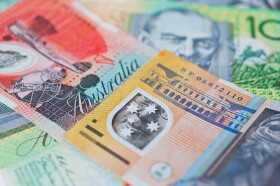Australian employment data came out today much weaker than was expected. Yet that did not prevent the Australian dollar from rising against the majority of its most-traded peers.
The Australian Bureau of Statistics reported that the seasonally adjusted number of employed people increased by a meager 500 in June from the previous month, whereas analysts had predicted a solid increase of 9,100. The May increase got a positive revision from 42,300 to 45,300. Yet the June data was not as bad as it might seem. The weak figure was a result of the decline in part-time employment by 20,600, while full-time employment increased by 21,100. The unemployment rate remained steady at 5.2%. The participation rate stayed at a solid 66%, meaning that two-thirds of Australians were participating in the labor market.
National Australia Bank reported that the business confidence index rose sharply to +6 in the second quarter of 2019 from 0 in the first quarter. At the same time, the business conditions index decreased from +4 to +1. Alan Oster, NAB Group Chief Economist, commented on the results:
The down trend in conditions continued in Q2 2019, and for the first time since 2014 the quarterly survey has now shown a below average readying. At face value the decline in conditions suggests the business sector has lost significant momentum over the past year and that we are unlikely to see a substantial pickup in growth in the Q2 national accounts.
The strong lift in confidence appears to be related to the outcome of the Federal election, with the bulk of the survey conducted post election day and also around the time of firming expectations of rate cuts. Based on the June Monthly Business survey we already know this effect was short-lived with confidence pulling back.
AUD/USD climbed from 0.7008 to 0.7041 as of 16:16 GMT today. EUR/AUD dropped from 1.6009 to 1.5938. AUD/JPY edged up from 75.65 to 75.90.
If you have any questions, comments, or opinions regarding the Australian Dollar, feel free to post them using the commentary form below.
